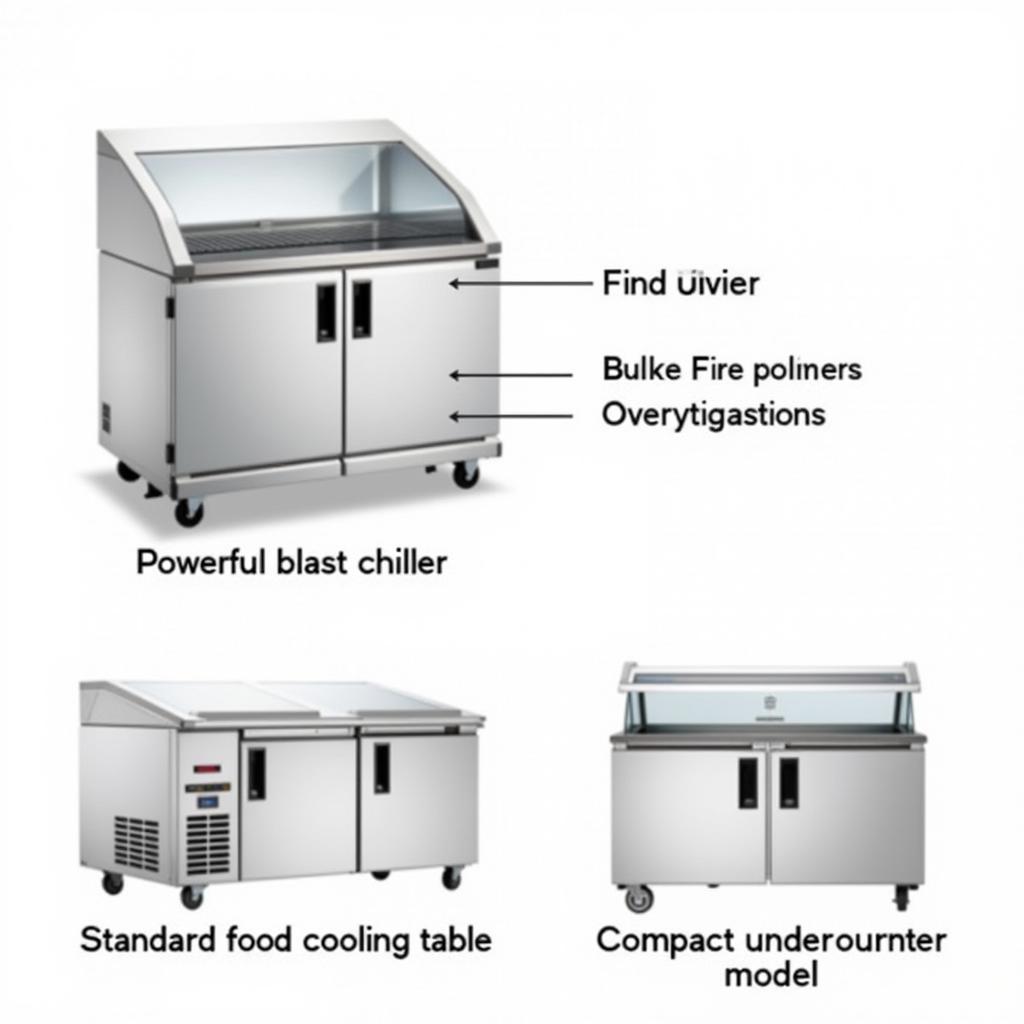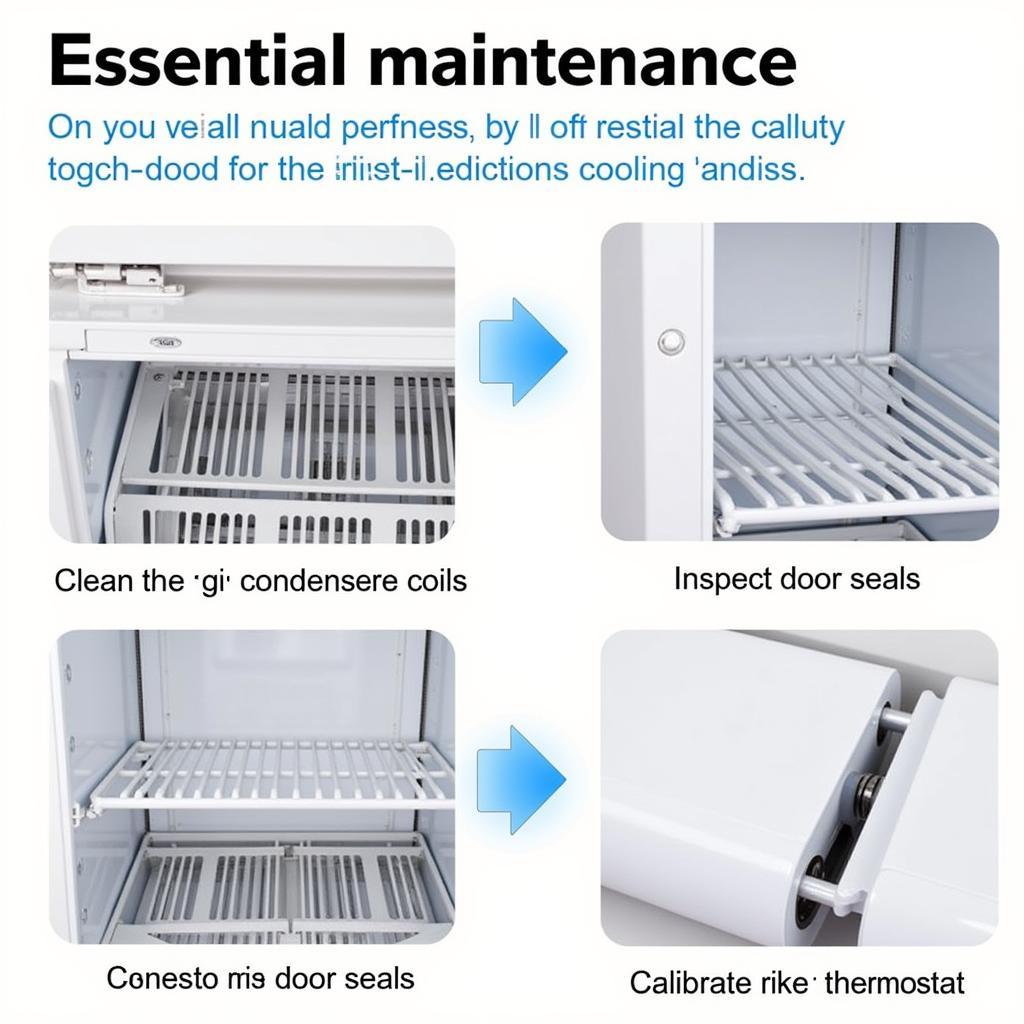A Food Cooling Table is a crucial piece of equipment in any professional kitchen, designed to safely and efficiently cool down cooked food. From preserving freshness to adhering to food safety regulations, understanding the ins and outs of a cooling table can significantly impact the quality and longevity of your culinary creations. This guide delves into the world of food cooling tables, exploring their benefits, various types, and essential maintenance tips.
Why Invest in a Food Cooling Table?
Food safety is paramount, and a food cooling table plays a vital role in preventing the growth of harmful bacteria. By rapidly reducing the temperature of cooked food, these tables minimize the time spent in the “danger zone” (40°F-140°F), where bacteria thrive. This not only safeguards your customers’ health but also enhances the quality of your dishes by preserving flavor, texture, and nutritional value. Thinking about adding a cooling table for food? It’s a game-changer for food safety.
Beyond safety, a cooling table streamlines your kitchen operations. Imagine seamlessly transitioning from cooking to chilling without the hassle of makeshift ice baths or overcrowded refrigerators. This efficiency boost allows you to focus on what truly matters: crafting delicious food. Moreover, the organized storage provided by a cooling table contributes to a cleaner and more efficient workspace.
Exploring the Different Types of Food Cooling Tables
Food cooling tables come in a variety of sizes and configurations to accommodate different kitchen needs. From compact countertop models perfect for smaller cafes to larger, multi-tiered units designed for high-volume restaurants, there’s a cooling table for every culinary setting. Understanding the nuances of each type is crucial for selecting the perfect fit for your establishment.
Blast Chillers vs. Standard Cooling Tables
Blast chillers are designed for rapid cooling, quickly lowering food temperatures to prevent bacterial growth. They are ideal for preserving the quality of delicate ingredients and prepared dishes. Standard cooling tables, while not as rapid, still provide efficient cooling and are suitable for less temperature-sensitive items.
Undercounter Food Cooling Tables: Space-Saving Solutions
Undercounter food cooling tables are a great option for maximizing limited kitchen space. These units seamlessly integrate beneath existing countertops, providing valuable cooling capacity without compromising valuable floor area. For smaller kitchens, an electric cooling tray for food could be another practical option.
 Different Types of Food Cooling Tables: Blast Chillers, Standard Cooling Tables, and Undercounter Models
Different Types of Food Cooling Tables: Blast Chillers, Standard Cooling Tables, and Undercounter Models
Maintaining Your Food Cooling Table: Tips for Longevity
Regular maintenance is essential for ensuring the optimal performance and longevity of your food cooling table. Simple steps like cleaning the condenser coils, checking the door seals, and calibrating the thermostat can prevent costly repairs and extend the lifespan of your equipment. Proper maintenance also contributes to maintaining food safety standards and prevents cross-contamination. Consider adding cloth food covers for an added layer of protection.
What are the key benefits of using a food cooling table?
Quickly cooling food prevents bacterial growth and preserves quality.
How do I choose the right food cooling table?
Consider your kitchen’s size, volume of food, and specific cooling needs.
 Maintaining Your Food Cooling Table: Cleaning, Inspections, and Calibration
Maintaining Your Food Cooling Table: Cleaning, Inspections, and Calibration
Conclusion
Investing in a food cooling table is a smart decision for any food service operation. From enhancing food safety to streamlining workflows, the benefits are undeniable. By understanding the different types available and implementing proper maintenance procedures, you can ensure that your food cooling table remains a valuable asset in your kitchen for years to come. Remember, a quality food cooling table is an investment in the safety and success of your culinary endeavors. A food truck refrigerator can also be an excellent option for mobile food businesses needing cooling solutions. If you’re looking to keep prepared food warm, a countertop electric food warmer can be a valuable addition to your setup.
FAQ
- How often should I clean my food cooling table?
- What is the ideal temperature for a food cooling table?
- What are the signs that my food cooling table needs repair?
- How much space do I need for a food cooling table?
- What are the energy efficiency considerations for food cooling tables?
- Can I use a food cooling table for storing frozen food?
- What are the different types of refrigerants used in food cooling tables?
Situations & further questions
Scenario 1: You’re opening a new bakery and need to rapidly cool cakes and pastries. What type of cooling table is best? A blast chiller would be ideal for this scenario due to its rapid cooling capabilities.
Scenario 2: Your small restaurant has limited counter space. How can you incorporate a cooling table? An undercounter cooling table would be a space-saving solution.
For further support, please contact us at Phone Number: 02437655121, Email: minacones@gmail.com Or visit us at: 3PGH+8R9, ĐT70A, thôn Trung, Bắc Từ Liêm, Hà Nội, Việt Nam. We have a 24/7 customer service team.